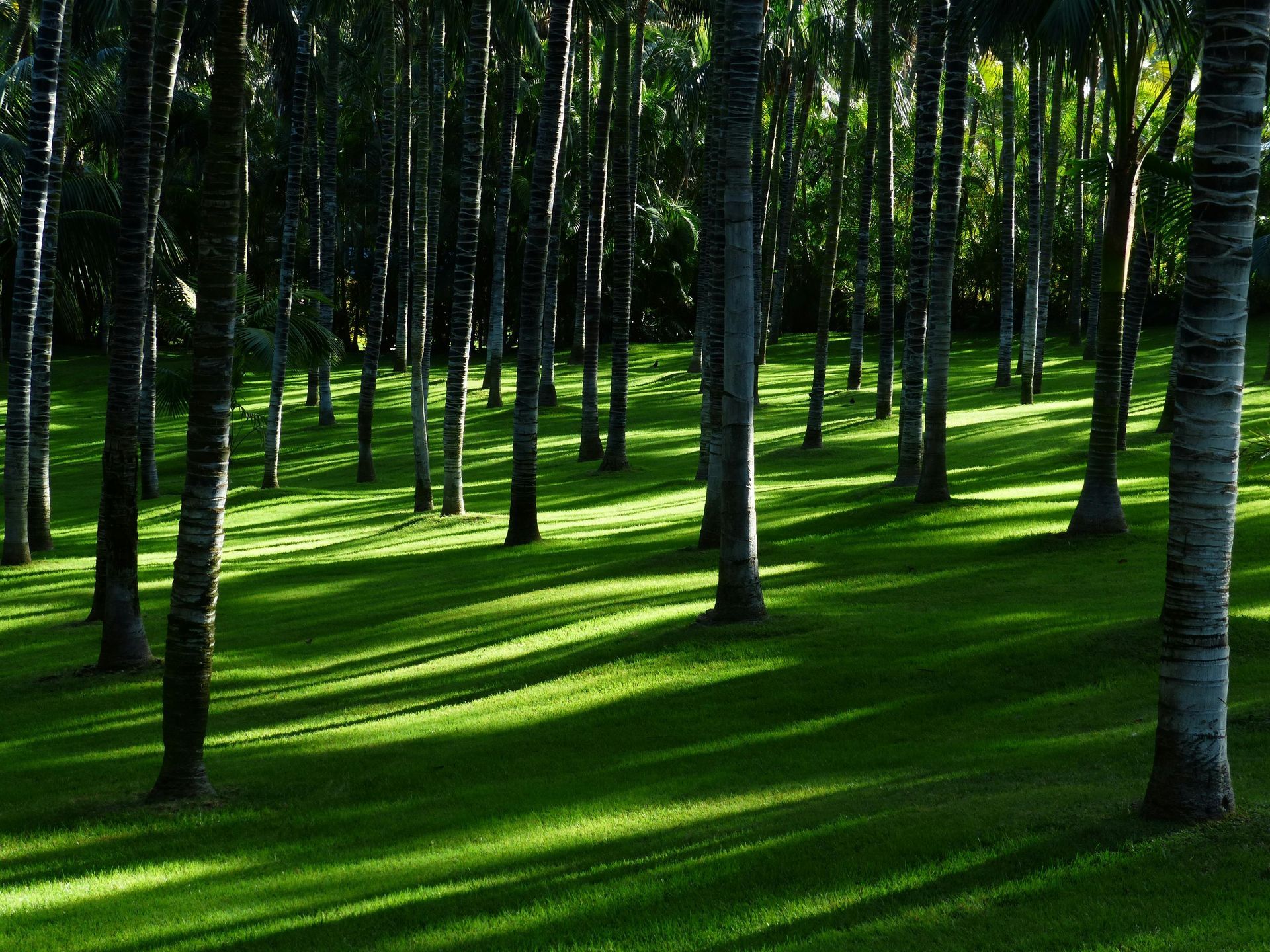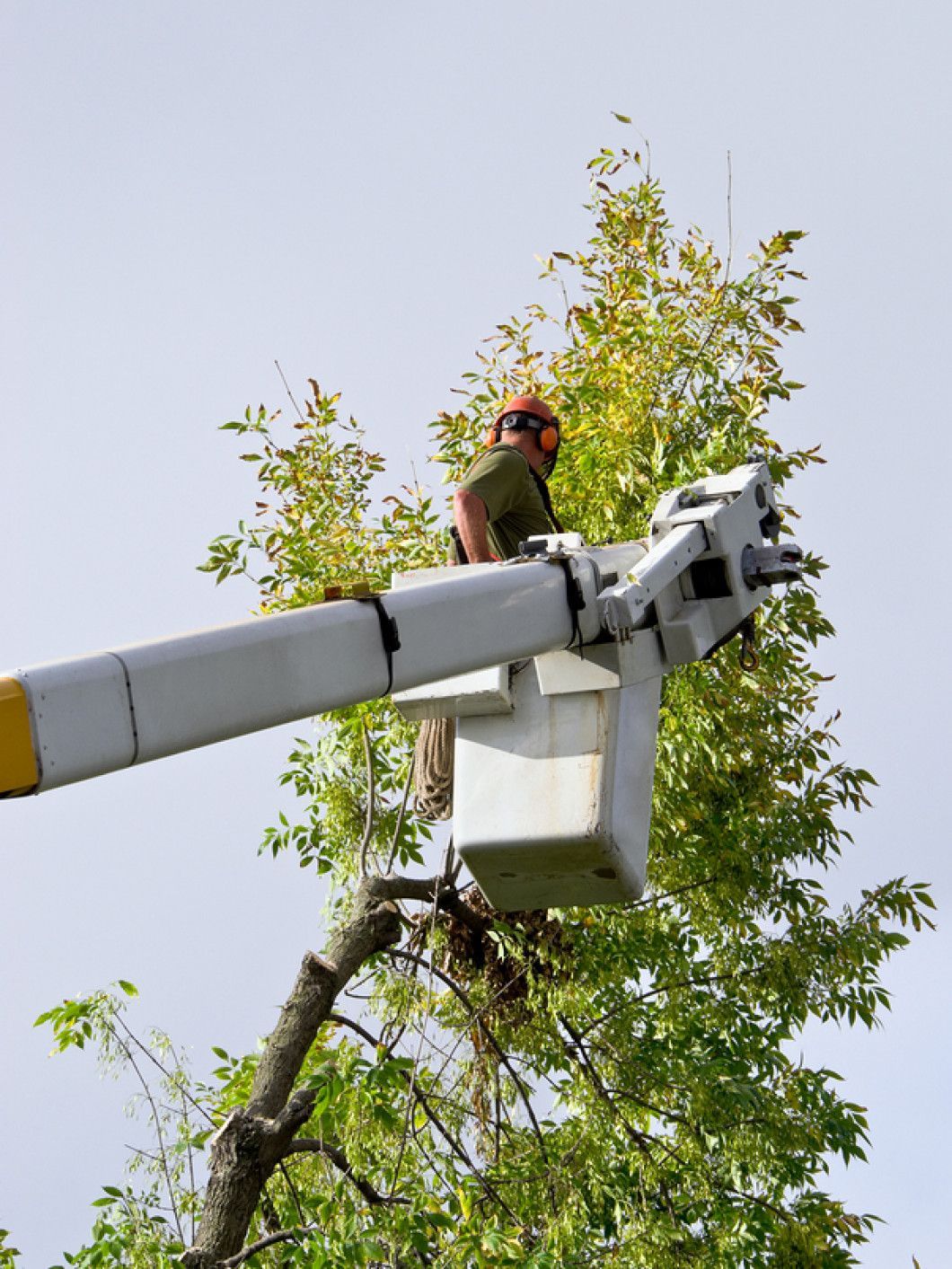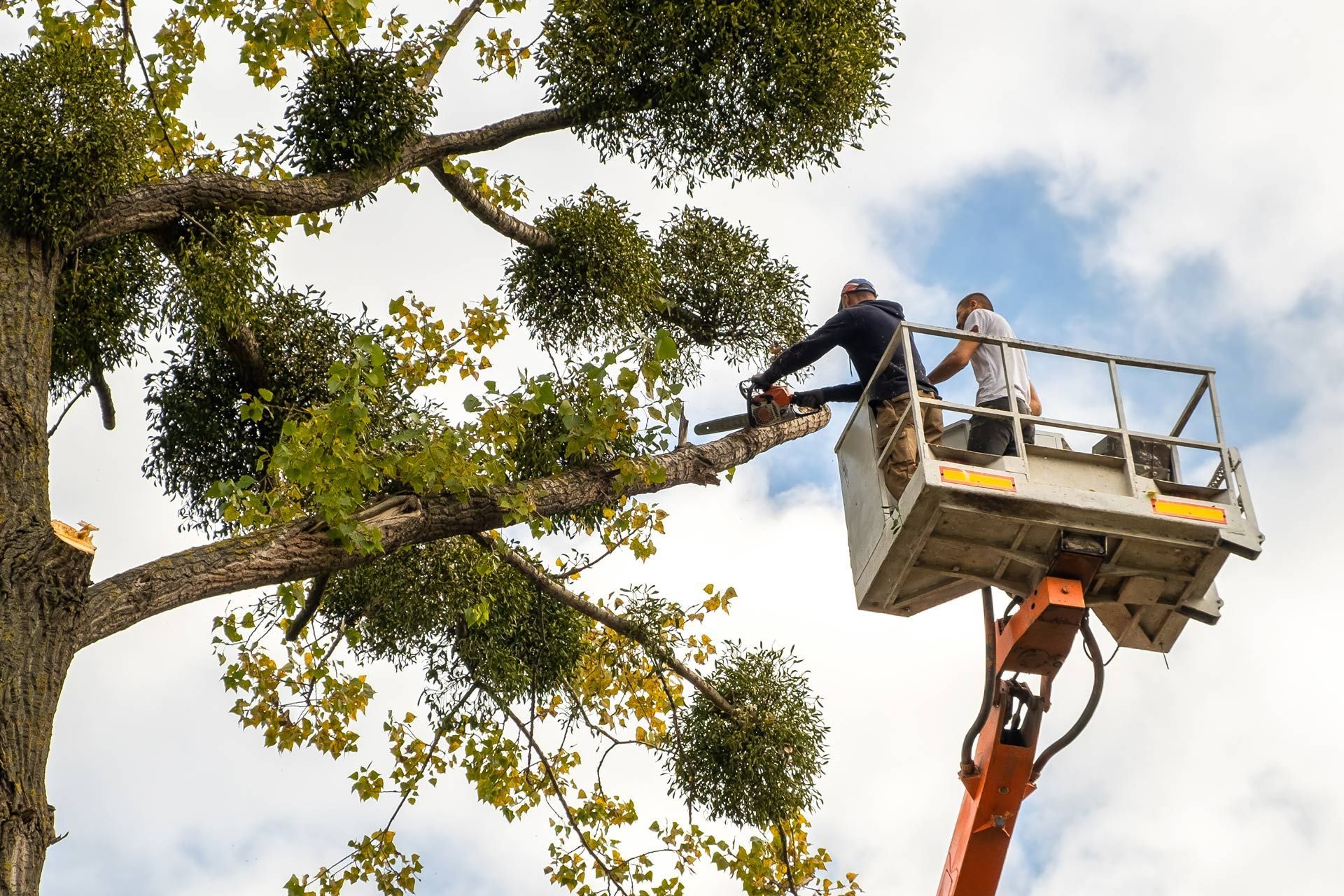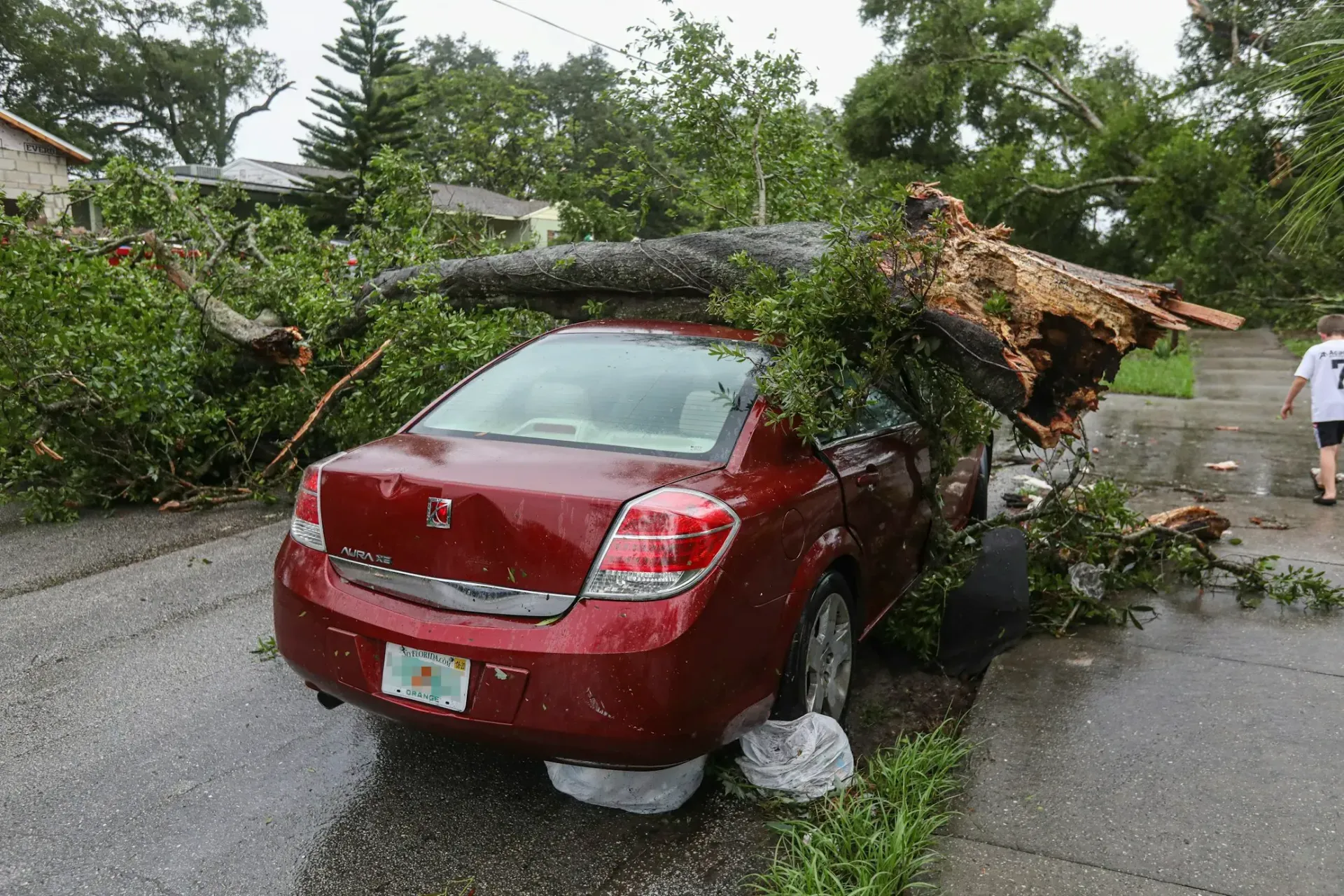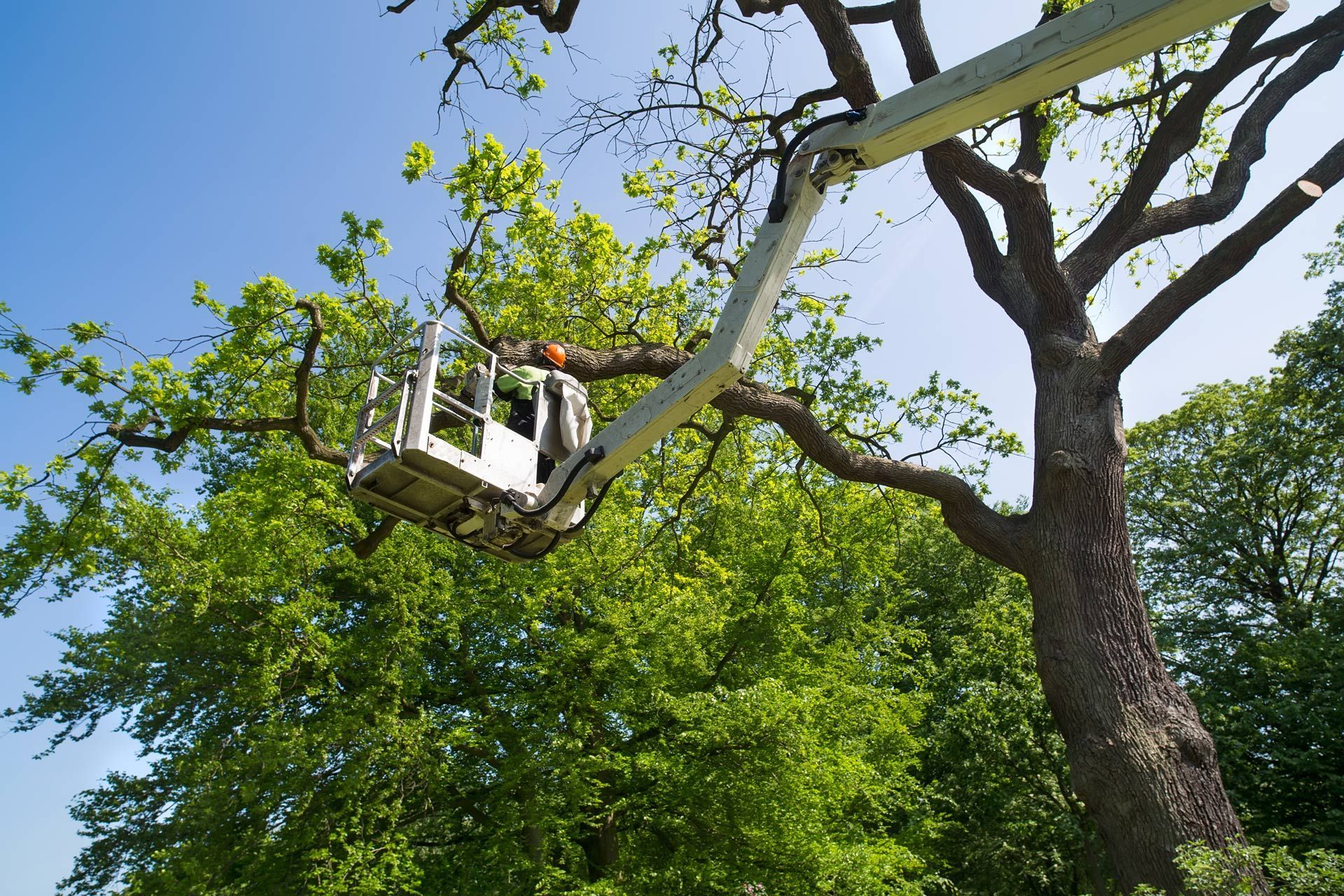Consequences of Pruning Trees at the Wrong Time
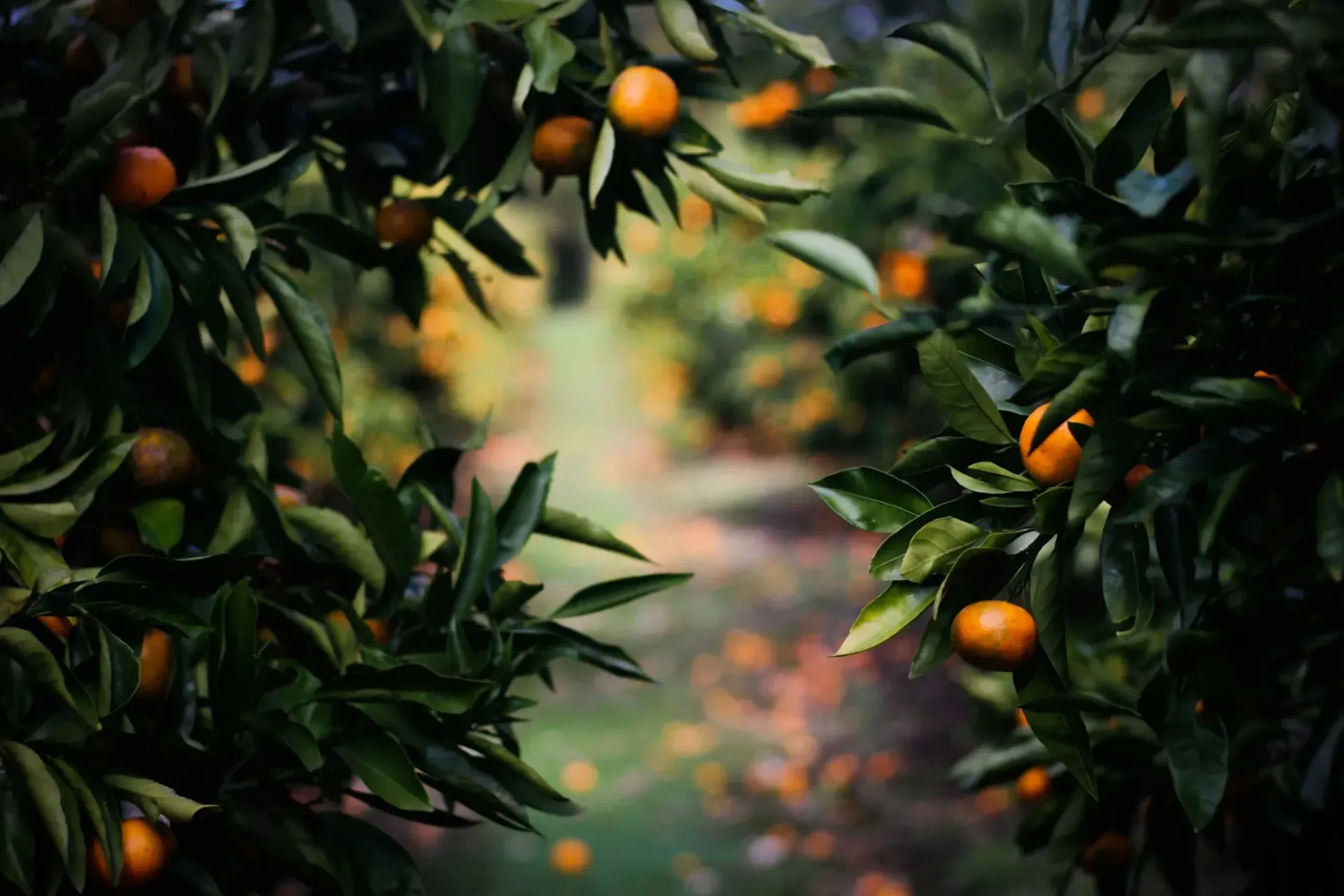
What Happens If You Prune a Tree at the Wrong Time?
Pruning at the wrong time can cause significant harm to your trees and shrubs. It can stress the plant, lead to diseases, and stunt growth, making them more vulnerable to pests.
A common problem is pruning during the active growth period in late spring or early summer. This is when trees and shrubs are using their energy to grow. Cutting branches during this time redirects their energy to healing wounds, which weakens the plant. The solution is to prune during late winter or early spring when the plants are dormant and can recover more effectively.
In this blog, we'll explore the consequences of bad pruning, how to help a tree recover, essential pruning
rules, and more. You'll learn practical tips to ensure your trees and shrubs stay healthy and thrive.
What is Bad Pruning?
Bad pruning involves using poor techniques or pruning at the wrong times, which can harm the tree or shrub. Common mistakes include:
- Pruning During Active Growth: Cutting branches during late spring or early summer when trees are actively growing can stress the plant. It uses energy for growth, and pruning redirects that energy to heal wounds, weakening the plant.
- Incorrect Cuts: Making cuts too close to the trunk or leaving stubs can prevent proper healing and invite disease.
- Over-Pruning: Removing too much foliage at once can reduce the plant's ability to photosynthesize, which is crucial for its health.
These practices can lead to weak, unhealthy trees and shrubs, making them susceptible to pests and diseases.
Can a Tree Recover from Over Pruning?
Yes, a tree can recover from over pruning, but it requires time and proper care. Signs of over pruning include sparse foliage, a lack of new growth, and exposed branches. To help a tree recover:
- Provide Adequate Water: Ensure the tree gets enough water, especially during dry periods. Proper hydration helps it recover.
- Mulch Around the Base: Mulching helps retain moisture and provides nutrients as it decomposes. Keep the mulch a few inches away from the trunk to prevent rot.
- Avoid Further Pruning: Give the tree time to recover before making any additional cuts. Let it focus on healing.
- Fertilize Sparingly: Use a balanced fertilizer to provide essential nutrients, but avoid over-fertilizing, which can stress the tree further.
With patience and care, an over-pruned tree can gradually regain its health and vigor.
What are the Five Rules of Pruning?
Following essential pruning rules can ensure the health and longevity of your trees and shrubs. Here are the five key rules:
- Prune in Late Winter or Early Spring: The best time to prune is when trees are dormant. This minimizes stress and allows for rapid healing before the growing season starts.
- Never Remove More Than 25% of the Tree's Foliage at Once: Over-pruning can severely stress the tree. Removing too much foliage at one time reduces the tree's ability to photosynthesize and can lead to poor health.
- Make Clean Cuts Just Outside the Branch Collar: The branch collar is the swollen area where the branch meets the trunk. Cutting just outside this area promotes proper healing and reduces the risk of disease.
- Remove Dead, Diseased, or Damaged Branches First: Focus on cutting branches that are already problematic. This helps improve the tree's overall health and prevents the spread of disease.
- Thin Out Crowded Branches: Improve air circulation and light penetration by thinning out branches that are too close together. This helps prevent disease and encourages healthy growth.
By following these rules, you can ensure that your pruning efforts contribute to the health and vitality of your trees and shrubs.
Is There a Wrong Way to Prune a Tree?
Yes, there are several incorrect pruning methods that can harm a tree:
- Topping: This involves cutting off the top of a tree, which can lead to weak, rapid growth and structural issues.
- Flush Cuts: Cutting too close to the trunk removes the branch collar, hindering the tree's ability to heal.
- Stub Cuts: Leaving too much of a branch behind can lead to decay and disease.
- Using Dirty or Dull Tools: Unclean or blunt tools can cause jagged cuts that are harder for the tree to heal and can introduce diseases.
Avoiding these mistakes and following proper techniques will help maintain the health and structure of your trees.
What Happens If You Prune Too Late?
Pruning too late in the season can have several negative effects on a tree. If you prune after the growing season starts, the tree might not have enough time to heal before it begins to produce new growth. This can result in:
- Weakened Growth: Late pruning can cause the tree to produce weak new branches that are more susceptible to breaking.
- Increased Risk of Disease: Cuts made late in the season might not heal quickly, leaving the tree vulnerable to diseases and pests that can enter through the wounds.
- Reduced Flowering and Fruiting: For flowering and fruiting trees, late pruning can interfere with the production of flowers and fruits for the next season.
To minimize these risks, aim to complete pruning before the tree begins to bud in late winter or early spring.
When Should You Stop Pruning?
Knowing when to stop pruning is crucial for tree health. You should stop pruning:
- Late in the Growing Season: Cease pruning by late summer to avoid stimulating new growth that won’t harden before winter.
- During Active Growth: Avoid pruning during late spring and early summer when the tree is actively growing.
- In Extreme Weather: Stop pruning during periods of extreme heat, drought, or cold, as these conditions can stress the tree further.
By adhering to these guidelines, you can ensure that your pruning activities do not harm the tree.
Can You Kill a Tree by Over Pruning?
Yes, over pruning can kill a tree. Removing too much foliage at once can severely stress the tree, reducing its ability to photosynthesize and produce the energy needed for growth and repair. Signs of a dying tree due to over pruning include:
- Sparse Foliage: A noticeable lack of leaves can indicate that the tree is unable to produce enough energy.
- Stunted Growth: Limited or no new growth may suggest the tree is struggling to recover.
- Exposed Branches and Trunk: Excessive pruning can expose the tree to the elements, increasing the risk of sunscald and other damage.
To avoid over pruning, adhere to the 1/3 rule and only remove a small portion of the tree’s foliage at a time.
What Does Over Pruning Look Like?
Over pruning is characterized by several visible signs:
- Sparse Leaf Coverage: The tree will have fewer leaves, making it look bare.
- Weak, Thin Branches: New growth will be weak and more prone to breaking.
- Large, Exposed Cuts: Numerous large cuts or wounds on the tree indicate excessive pruning.
- Unnatural Shape: The tree may appear lopsided or unbalanced due to the removal of too many branches.
These signs not only affect the tree’s appearance but also its overall health and stability.
Do You Put Anything on a Tree After Pruning?
After pruning, it is generally not necessary to apply anything to the cuts. Trees have a natural ability to heal themselves if proper pruning techniques are used. However, there are a few post-pruning care tips to consider:
- Keep the Area Clean: Remove any fallen branches and leaves from the base of the tree to prevent pests and diseases.
- Watering: Ensure the tree is adequately watered, especially during dry periods, to help it recover.
- Mulching: Apply mulch around the base of the tree to retain moisture and regulate soil temperature. Keep the mulch a few inches away from the trunk to prevent rot.
These steps help support the tree’s natural healing process.
Can Trees Be Trimmed Too Much?
Yes, trees can be trimmed too much, which can cause harm similar to over pruning. Excessive trimming removes a significant portion of the tree's foliage, which can lead to:
- Reduced Photosynthesis: The tree’s ability to produce energy is diminished, affecting its growth and health.
- Increased Vulnerability: The tree becomes more susceptible to pests, diseases, and environmental stress.
- Poor Structure: Excessive trimming can lead to an unbalanced structure, making the tree more prone to breakage.
To avoid these issues, trim only what is necessary to maintain the tree’s health and appearance, and always follow proper trimming techniques.
Conclusion
Pruning at the wrong time can hurt your trees and shrubs. Pruning during active growth, using poor techniques, or over-pruning weakens them. Trees need proper care and timing to thrive. If you prune too late, the tree struggles to heal and becomes prone to diseases. Knowing when to stop pruning is key to avoiding stress on the plant. Over-pruning can even kill a tree, leaving it sparse and weak. Recognize over-pruning by looking for signs like sparse foliage and weak branches. After pruning, proper care like watering and mulching helps the tree recover. Trees can be trimmed too much, which reduces their ability to photosynthesize and makes them vulnerable.
To keep your trees healthy, prune them in late winter or early spring. Follow the five rules of pruning and avoid common mistakes. Proper pruning keeps your trees strong and beautiful.
Call to Action
For expert tree care, trust Troyer's Tree Service. We specialize in tree removal, tree trimming, stump grinding, and lot clearing. Serving West Farmington, Solon, Warren, and Chagrin Falls. Call us today to keep your trees healthy and your property beautiful.


